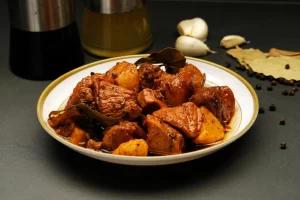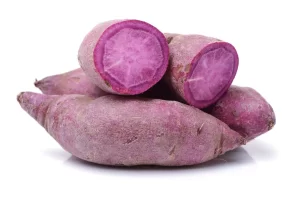The Best Fluffy Pancakes recipe you will fall in love with. Full of tips and tricks to help you make the best pancakes.

In Indian culture, laddu is an iconic sweet treat symbolizing joy and auspiciousness. It is more than just a dessert; it is a staple of Indian festivities and celebrations, often made from flour, sugar, ghee, nuts, and dried fruits. This article explores the origins and evolution of Laddu, embarking on a journey through its history. Each region boasts a unique recipe and method of preparing Laddu, and we’ll explore them all. In addition, we examine the traditional techniques used to craft Laddu, as well as its significance in various Indian festivals, reflecting the sweet’s deep-rooted cultural and religious significance. Besides highlighting Laddu’s culinary diversity, this exploration also illustrates its enduring legacy in Indian traditions, making it a symbol of joy and celebration all over India.
Laddu is the sweet heart of Indian festivals and traditions
The Laddu, a quintessential symbol of Indian culinary artistry, has an ancient history that dates back to Vedic times. In India’s rich cultural tapestry, this spherical sweet has evolved over the centuries from flour, ghee, sugar, and assorted nuts. India’s religious and cultural ethos embeds Laddu’s historical significance deeply beyond gastronomy, as a symbol of good fortune and divine blessings.
In the realm of Hindu festivals like Diwali and Holi, Laddu takes center stage, not only as a treat but as a sacred offering to deities, epitomizing auspiciousness and prosperity. During Diwali, the festival of lights, Laddus are offered to Lord Ganesha, the deity of wisdom and prosperity, as a mark of reverence and celebration. Similarly, in the vibrant festival of Holi, these sweets symbolize the joyous essence of the occasion, shared amongst friends and family as a gesture of love and unity.
Laddu finds its place in various other Indian celebrations as a symbol of joy and community spirit, transcending Hinduism. From ancient scriptures to modern celebrations, this sweet’s history demonstrates its enduring relevance and its role in bringing together India’s diverse communities. Laddu’s evolution provides a rich narrative of India’s rich cultural and religious heritage as we explore its history.

The types of laddus
Laddus is an iconic Indian sweet dish that offers a variety of flavors and textures, showcasing India’s vast culinary landscape. Classic laddu is made from gram flour (Besan), clarified butter (Ghee) and sugar. Its rich, nutty flavor and smooth texture make it a staple on festive occasions and religious ceremonies. Boondi Laddu is made from small balls of fried chickpea flour (Boondi) that are soaked in sugar syrup and then shaped into round balls. It’s especially popular during festivals and weddings due to its slightly crunchy texture and sweet, syrupy flavor.
Motichoor Laddu is similar to Boondi Laddu but the pearls are smaller, softer and melt in your mouth. Since these pearls are fried in syrup and dyed with saffron or food coloring, they are not only a treat for the taste, but also for the eyes. Laddus is more than just a dessert; They are an integral part of India’s cultural identity and reflect regional tastes and traditions. Laddus in its many forms remains a much-loved dessert in India, be it grainy Besan Laddu, crunchy Boondi or soft Motichoor.
Making laddu the traditional way
- Preparation of the base:
- Start by selecting the appropriate flour base, such as gram (Besan), wheat, or semolina (Rava).
- Roast the chosen flour in ghee (clarified butter) over a low flame until it turns golden brown, ensuring to release the characteristic nutty aroma of Laddus.
- Flavoring and sweetening:
- Add a sweetening agent to the roasted flour, typically sugar or jaggery (traditional unrefined sugar).
- Continuously stir the mixture for even cooking and to prevent it from burning.
- Enhance the mixture with additional ingredients like chopped nuts, dried fruits, cardamom powder, or saffron, depending on the Laddu variant being prepared.
- Variations include:
- For Besan Laddu: Focus on slow roasting the gram flour to get the right color and flavor without burning.
- Prepare tiny gram flour balls (Boondi), deep fry them, soak them in sugar syrup, and then shape them into Laddus.
- For Motichoor Laddu: Create even smaller Boondis and employ a finer technique to achieve a soft, melt-in-the-mouth texture.
Laddu-making is a ritualistic process that requires meticulous attention to detail at each step. Every Laddu is a labor of love and steeped in tradition thanks to this methodical approach.
The role of Laddu in modern Indian society
Laddu has transcended its traditional role and is seamlessly integrated into daily life and special occasions in contemporary Indian society. In addition to its status as a staple of religious ceremonies and holidays, this sweet also finds a place in Indians’ daily lives, often as a quick snack or delightful dessert. Besides temples and festivals, laddus are also popular at social gatherings and corporate events, and are also popular gifts that symbolize happiness and good luck.
The modern era has given innovative twists to the traditional Laddu with an increasing focus on health conscious adaptations. Innovators in Indian cuisine have started making low-sugar or sugar-free versions of Laddus to cater to the health-conscious crowd. Ingredients like honey, dates or jaggery replace refined sugar, while the use of whole grains, seeds and nuts enhances the nutritional profile of these sweets. These adaptations make Laddus more accessible and appealing to a wider audience, including those with dietary restrictions or health-conscious people.
Laddu’s evolution in modern India is a perfect example of combining tradition with contemporary wellness trends, ensuring its continued appeal to all sections of society while adapting to changing lifestyles.
The global impact of Laddu
The transformation of laddu from a traditional Indian sweet to a globally recognized sweet dish reflects the broad influence of Indian cuisine. Throughout the world, its popularity has transcended the borders of India. As a result of the vast Indian diaspora, Laddu is now a common sweet shop item at multicultural events around the world. In addition to its exotic flavors and textures, Laddu’s popularity has been boosted by globalization. In the confectionary world, Laddu is not just an Indian delicacy, but a global sensation due to its versatility and adaptability to a variety of flavors.

Conclusion
In addition to its rich cultural and historical significance, laddu exemplifies India’s rich culinary heritage. As a delectable treat rooted in Indian traditions, this sweet symbolizes joy, auspiciousness, and the essence of celebration. Laddu has played an important role in religious ceremonies, festive occasions, and daily life throughout history, reflecting the diversity and vibrancy of Indian cuisine. Its journey from local kitchens to global fame illustrates its universal appeal. Laddu’s enduring popularity reflects the timeless charm and cultural richness of Indian cuisine, making it an essential part of the country’s gastronomic identity at home and abroad.
FAQ.
Q. What is Laddu and why is it significant in Indian culture?
Laddu is an Indian sweet made from flour, sugar, ghee, and other ingredients. As an integral part of religious ceremonies and festivals like Diwali and Holi, it symbolizes joy and auspiciousness.
Q. Are there different types of Laddu and how do they vary?
Laddus come in several types, including Besan Laddu, Boondi Laddu, and Motichoor Laddu. A variety of textures and flavors are offered by each dish, as well as unique ingredients and preparation methods.
Q. How has Laddu adapted to modern dietary preferences?
Low-sugar and sugar-free versions of Laddu are available today. Honey, dates, or jaggery are substitutes for refined sugar, and whole grains and nuts enhance nutritional value.





